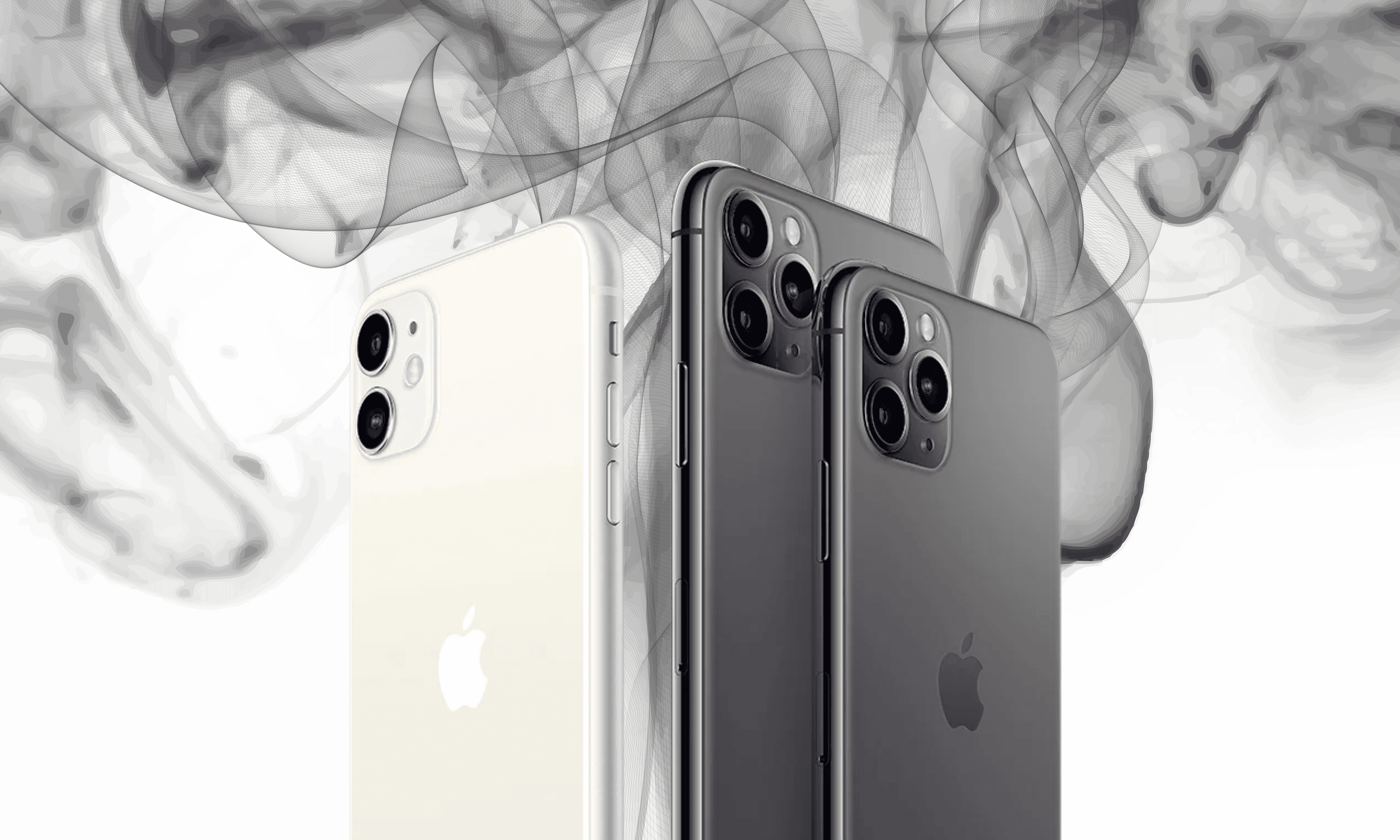
We all know plastic waste and fast fashion take a toll on the planet — but what about iPhones? Every year, millions of iPhones are produced, upgraded, and quietly replaced. It’s easy to overlook the environmental cost behind a sleek new device, but the impact runs deeper than most of us realise.
So, are iPhones bad for the environment? And is Apple doing enough to make its products truly eco-friendly? Let’s explore the hidden footprint of the world’s most popular phone.
One of the biggest environmental problems with iPhones — and smartphones in general — is their short lifespan. Every year, Apple unveils a new iPhone model, prompting millions of users to upgrade. Whether it’s the end of a contract, a cracked screen, or just the appeal of the latest tech, many people choose to replace their phones.
In fact, around 45% of smartphone owners prefer upgrading over repairing, mainly because of high repair costs. This constant cycle of production and replacement creates a significant environmental challenge — from resource extraction to electronic waste.
When it comes to the iPhone’s environmental impact, the manufacturing process has the greatest footprint. According to Apple, 79% of its total carbon emissions come from manufacturing alone, while another 29% is produced during product use.
Creating an iPhone involves mining raw materials, processing components, and assembling devices — all of which consume energy and generate emissions. While Apple has taken steps to reduce the use of toxic and hard-to-source materials, challenges remain. This includes everything from extracting rare earth elements to shipping and final assembly — a complex global process that still has a significant environmental toll.
For instance, the latest iPhones now feature 100% certified recycled cobalt and over 95% recycled lithium in their batteries — a meaningful improvement. But even with these efforts, Apple’s own environmental reports show a trend of rising carbon emissions associated with their most popular phones.
It’s not difficult to calculate if iPhones were made to last, consumers could offset the emissions created during production by simply being able to use their iPhones for longer. But fragile designs and costly repairs encourage people to pick a new iPhone instead of keeping their current model for longer.
Remember the controversial Apple news of 2018? Apple was caught intentionally slowing down older iPhones in an attempt to prevent unexpected shutdowns. Fast forward to today, after various multi-million dollar lawsuits, Apple is now more transparent about its practices and users have the option to manually disable processor throttling on their iPhones. But the primary concern remains - Apple building planned obsolescence into its devices which contradicts its claims of sustainability. A tech company that projects itself as eco-friendly shouldn’t be utilising such practices.
The glass design gives iPhones a premium feel, however "glass is glass and it breaks". It makes iPhones prone to scratches as well as unsightly cracks that are expensive to fix. Apple has continued to add Ceramic Shield coating to its iPhone 16 series, being 50% tougher than the previous generation. This improvement is applaudable and various drop tests have reported good durability, yet, it still shatters if dropped on a concrete pavement. What is the point of protecting the front glass and leaving the rear one out of the equation? This leaves us with the impression that Apple is making baby steps in the right direction. But, what is claimed on stage during iPhone launches differs from the real life products and it doesn't match up with Apple's ambitions towards sustainability.
Apple has made notable strides in supporting its devices for longer than many of its competitors, equipping iPhones with high-performance processors that remain capable for years. For instance, the iPhone 11, released in 2019, still runs the latest iOS smoothly and is expected to receive updates for the foreseeable future. However, despite the software longevity, hardware components like batteries naturally degrade over time. While there are ways to preserve battery health, replacement eventually becomes necessary—and official battery replacements can only be sourced through Apple or Apple-certified repair providers.
One of the main reasons for an iPhone replacement is physical damage or an unhealthy battery. Apple charges substantial fees for repairs and actively opposes Right to Repair. This makes it challenging and nearly impossible to fit a new screen, swap a battery at home or at a local repair shop for a fraction of the cost. When weighing the cost of repairing an iPhone against the price of a new phone, factoring in the hassle of taking it to a repair shop then dealing with warning messages/disabled features, it is common for consumers to decide to upgrade instead.
As documented in a video by Phone Repair Guru on YouTube, Apple has gone one step further with the iPhone 13 series disabling FaceID after the display replacement, even if the screen fitted was from another iPhone. TheArtofRepair channel on YouTube was among the first to face a new ‘feature’ that Apple introduced: battery replacement in the newest iPhones triggers a warning message saying “Unable to verify this iPhone has a genuine Apple battery”. This disables the battery health analysis, further damaging the longevity of the iPhone, unless the battery can be authenticated to the iPhone at an Apple store. Authentication can only be performed with Apple’s repair and calibration software which Apple has not yet made available to independent repair shops. The official communication is that Apple keeps control of this over fears of catastrophic battery failure.
Although Apple has been known to take measures in preventing unauthorised repairs, this year they have changed their tune and now allow independent repair providers and customers to utilise genuine Apple parts for repairs. This means that swapping your iPhone's screen at a third-party repair shop that doesn’t provide Apple genuine parts can now be avoided which would ultimately trigger a non-genuine display alert. Apple has now doubled the number of locations that provide this service and all have access to Apple parts and training.
If you have owned an Apple phone, it will come as no surprise that the cables break easily and it is likely that you have had at least double the amount of charging cables. Apple charging cables are a nightmare for consumers. With daily use, cables fray and the contacts start to wear off, and the cost of £19-£29 per cable over the course of owning an iPhone adds up fast. However, from a design perspective they are sleek, simple and follow the design-first directive that is fundamental to Apple.
In the past, the iPhone maker tried to reject the EU proposal to introduce universal chargers for smartphones, arguing that such regulations would stifle innovation and harm consumers and the economy. However, this proposal has since become law, and Apple was ultimately forced to comply. With the release of the iPhone 15 series, Apple switched to the universal USB-C standard—marking a significant shift from its longstanding use of proprietary Lightning cables. While the company initially resisted the move, claiming it would create more e-waste and hinder progress, this change suggests a reluctant alignment with environmental goals. Features like MagSafe and the vision of a port-less iPhone may still be ways to maintain control over their accessory ecosystem, but the adoption of USB-C indicates a step—albeit pressured—toward reducing electronic waste.
Apple has also made a decision to no longer supply charging bricks with the iPhone 12 series and positioned this move as an effort to fight the growing amounts of e-waste. If you have previously owned an iPhone, you most likely have a charging adaptor, but there's a caveat. The iPhone 12 series is only compatible with iPhone 11 charging bricks. If you're not upgrading from an iPhone 11, you'll have to spend extra money to purchase the adapter separately. The adapter comes in its own packaging, has its own carbon footprint and of course, requires separate delivery. We don't need to do any advanced math to conclude that this green move by Apple does more harm than good.
Apple has made real progress in reducing the environmental impact of iPhones. The company now powers its retail stores and data centres with 100% renewable energy and uses advanced recycling robots capable of disassembling hundreds of devices per hour. It has also incorporated more recycled materials and taken steps to minimise packaging waste. Compared to many other smartphone brands, Apple is ahead when it comes to sustainability efforts.
However, iPhones still carry a notable environmental footprint. To move closer to being truly eco-friendly, Apple must continue to innovate—especially in making devices easier to repair, reducing reliance on rare earth elements, and designing products that last longer and are simpler to recycle.
Realistically, no new smartphone can yet be considered 100% green. Every iPhone manufactured still contributes to environmental harm, no matter how efficient the process. But there is reason for optimism. With its vast resources and global influence, Apple has the potential to lead the industry toward more ethical and sustainable practices.
As consumers, we also play a crucial role. The most sustainable smartphone is the one you already own. Extending the life of your device, repairing instead of replacing, and trading in responsibly when it’s time to upgrade are powerful actions. Together, small changes in our habits—and continued pressure on tech companies—can make a big difference in building a greener digital future.


The iPhone used to define innovation. So why does every new model now feel the same? Discover why Apple’s innovation story may be running out of pages.

We’ve looked at our own trade-in price data for Apple, Samsung, and Google flagships and foldables - the most popular trio of phone brands - to determine how fast their phones depreciate, and which ones are the worst and the best at holding their value over the first and second year on the market.
With Pixels becoming a decent contender for your upgrade choice, we’ve crunched the numbers to reveal depreciation patterns of Google Pixel phones.